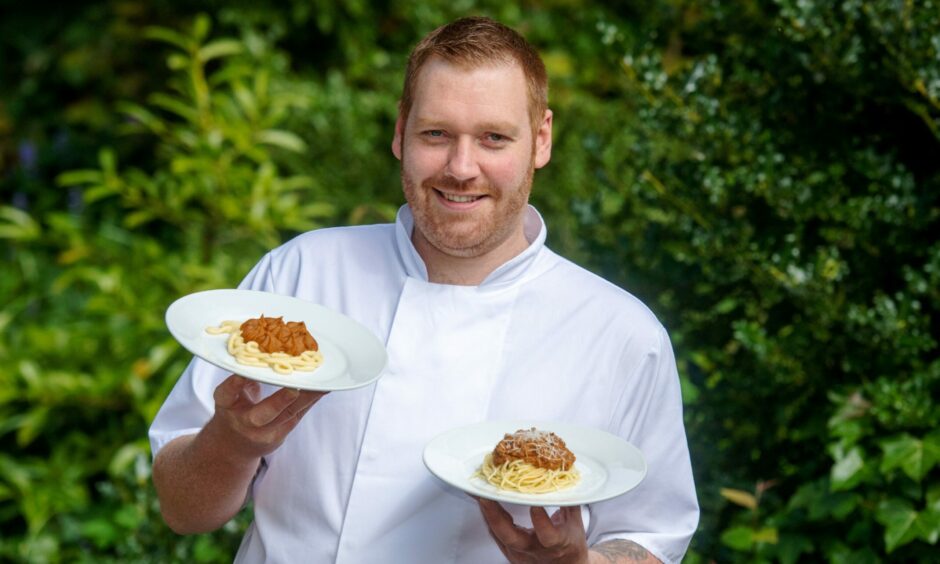
With dishes such as haggis bon bons with lemon and pepper mayonnaise, Thai-style meatballs and a good ol’ cranachan in his repertoire, it isn’t surprising to hear that Stuart Middleton once cooked for David Beckham.
However, this menu is one he reserves for less famous faces.
Elgin-based Stuart is catering and dining operations manager at Renaissance Care, overseeing all things food in 16 homes across the country, including Kingsmills Care Home in Inverness, Cowdray Club Care Home in Aberdeen and Meadowlark Care Home in Forres.
“You really do get true job satisfaction from it,” he said.
“Being a chef in restaurants and hotels can be quite a thankless, laborious job, and it is tough in the care homes, but you can see the real impact you have on residents.
“It’s not just about nice food, but it’s also giving residents good nutrition, and through that you’re bettering someone’s life.”
Bitten by the catering bug
At the age of 16, fresh out of school and unsure where he was headed, Stuart took a job washing dishes in a care home in Forres.
“I very quickly realised I had been bitten by the catering bug,” he explained.
“I worked myself up through the ranks, showing that I was willing and able to do more and learn more. I went to another care provider as an assistant chef and was very quickly promoted to head chef.
“I put myself through college but I realised I needed to get out into the bigger world for experience. It was difficult to get jobs, when I was going for interviews with chefs in hotels they didn’t think I had any experience, they didn’t understand the care sector at the time.
“I started working with Diageo entertaining overseas clients, showing them the best Scotland had to offer, the best whisky, the best venison. It was fantastic, and the guys there had bags and bags of knowledge, I just soaked everything up.”
Star-struck Stuart
A normal morning on the job led to the most star-studded moment of Stuart’s career so far.
He explained: “One morning we were sat having breakfast at Gleneagles and the chef asked if we wanted to go and help with some outside catering where ‘you might even meet a celebrity’.
“He said it was a footballer; I’m a rugby guy so I said it’d probably mean nothing to me, but he assured me I’d recognise him.
“We got the stuff together, went over to where we were doing the event, and there were all these bottles of whisky on the walls. I didn’t think anything of it at the time, then as we were finishing setting up, in walks David Beckham.”
Stuart added: “I did recognise him.”
And what memorable meal does one of the world’s most famous footballers eat at the private launch of his whisky?
“I can’t remember exactly what we did,” said Stuart.
“There was a chicken parfait with clootie dumpling and an apricot puree, a smoked lobster claw, a wagyu steak and a rhubarb parfait.
“There was very little interaction, but as we were tidying up there were a few things left like cakes and biscuits, we asked if they wanted them, he took the box and went down the corridor handing them out to all the office staff.”
Returning (care) home
Having had a glimpse of the high life, Stuart was ready for a new challenge – or rather a return to an old one.
He was drawn back to the care industry, determined to make a change: “A job for a head chef at a care home came up. I knew I could do it but I didn’t know if I wanted to go back.
“I thought if I could take just one small thing from the bigger high-end world and apply it in a care home setting, it would be a really lovely idea.
“That’s my philosophy on it now, if we can do one thing a day that makes residents feel really special then let’s do it.”
Stuart is now responsible for making sure 780 residents across all Renaissance care homes are well fed, and that’s not a job he takes lightly.
“We pack food into our residents like you wouldn’t believe,” he said.
“They get breakfast, mid-morning tea and biscuits, a two-course lunch, afternoon tea, a two-course dinner, then a snack before bed. That gives us plenty of opportunities to get them good nutrition, calories, fibre and vitamins.”
Innovating cooking
Being a chef in a care home setting means more than just putting pretty plates of food on tables in front of willing diners – it means ensuring that dishes can be enjoyed by a wide range of people with an even wider range of dietary requirements.
Stuart said: “You have to be an all-rounder because you have to do everything, but you also need to adapt a dish for everyone.
“That could be someone on a texture modified diet but it could also be someone who is vegan or vegetarian, or doesn’t eat a certain protein for whatever reason, or finds it easier to eat finger food because they don’t have the dexterity and motor skills to pick up a fork and knife. That alone is a huge challenge.”
Texture modified diets are something award-winning chef Stuart is used to dealing with, and he has a very unique way of doing so.
He takes dishes as complex as lasagne, blends each component, pops them into piping bags and reconstructs them on the plate.
“Whatever we serve for someone who is on a – I hate this expression – ‘normal’ diet, we should be able to offer that in the same way to someone on a texture modified diet,” Stuart explained.
“What do you give someone who needs a completely pureed meal for breakfast? We can make them sausages, eggs and beans, it’s just about having the skills to do that.
“We cook the sausages as normal, then we have a machine we put them into where we can add things into them. I’ve found a bit of cheese for example helps bind the fat. The machine purees it so it’s really smooth, then if you put that into a piping bag and put it on the plate, it looks like a sausage.
“With eggs there’s lots of ways you can do them, but my favourite way is to boil them until they’re just under hard boiled, separate the yoke and the white, blend them separately then build them back up so that it looks like a fried egg.”
Meal or No Meal
Residents are partial to classic home favourites, like mince and tatties and steak pie, but they also look for something a little bit different.
“It’s things you wouldn’t necessarily think would feature on a care home menu, but we’ve got a new generation of people coming into care who are well travelled so it’s familiar to a lot of them,” said Stuart.
“As you get older your tastebuds start to diminish, so if you use real big-hitting flavours it’ll make the tastebuds pop.”
This means you’ll find more exotic dishes and bold flavours.
But Stuart doesn’t simply create menus to his own taste and hope they go down well. He relies on residents to tell him what they like and don’t like, which has become easier with the development of a little game.
Stuart explained: “We send the menu out for the chefs to have a look at, then they pick some of the weirder dishes – the ones they’re not sure if residents will like – like a beef and coconut curry for example, then we do a Meal or No Meal tasting event.
“The chefs cook the dishes so they get to try them out, then the residents taste them and hold up a score card that either says ‘meal’ or ‘no meal’.
“If there are more ‘no meals’ then we replace the dish with something they want. There is no nutritional value in food that goes in the bin so why would we keep making it?”
Breaking the stigma
Location also plays a part in the tweaking of a menu, as Stuart has come to learn given that he works in homes from Inverness to Ayr.
“Steak pie for example, down in the central belt they put sausages in their steak pie. For me that’s unheard of, but I went out and spoke to residents and they said that’s how they’ve always had it.”
Stuart sits on the Scottish board of the National Association of Care Catering, an organisation that is constantly working to improve and diversify the way it looks at food in care homes.
As well as hoping to keep expanding his skills and trying new techniques, Stuart aims to change perceptions of care home chefs and their place within the wider culinary world.
“I’d say there’s a lack of understanding of what the care catering sector actually entails; it’s not until you are fully immersed in that world that you realise just how demanding the role is,” he said.
“I do think hotel and restaurant chefs think they’ve got the harder job but care home catering is hard work.”
When thinking about whether he sees himself returning to the glitz and glamour of star-studded catering, Stuart was certain in his conclusion.
“I’ve found what I’m good at; I don’t just enjoy it, I get a real kick out of it,” he said.
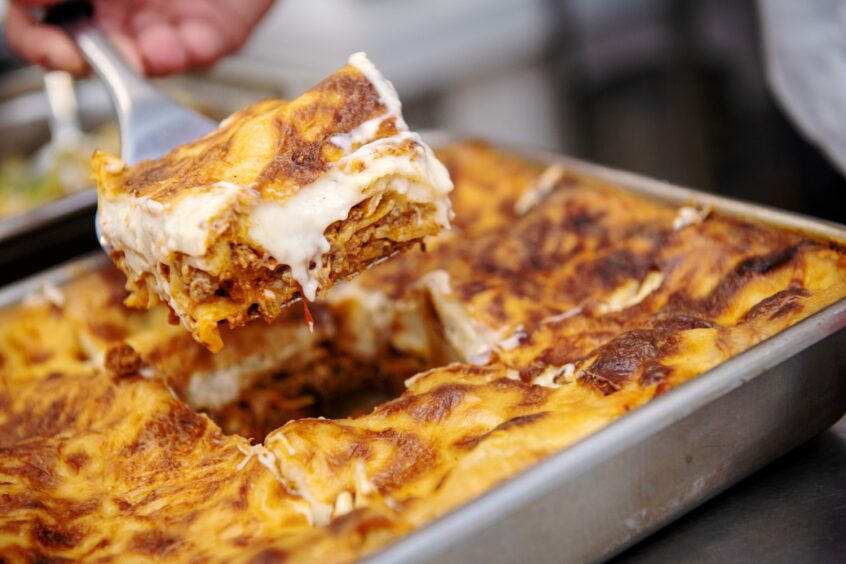

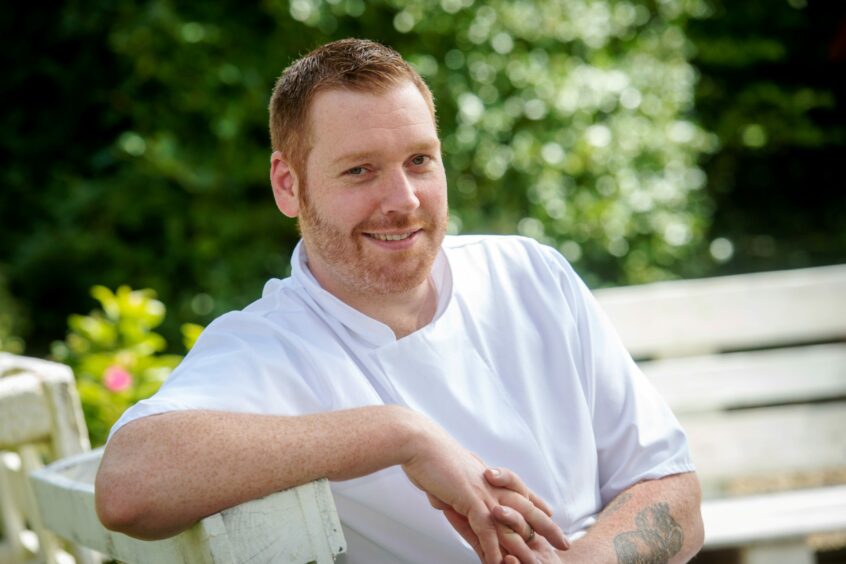
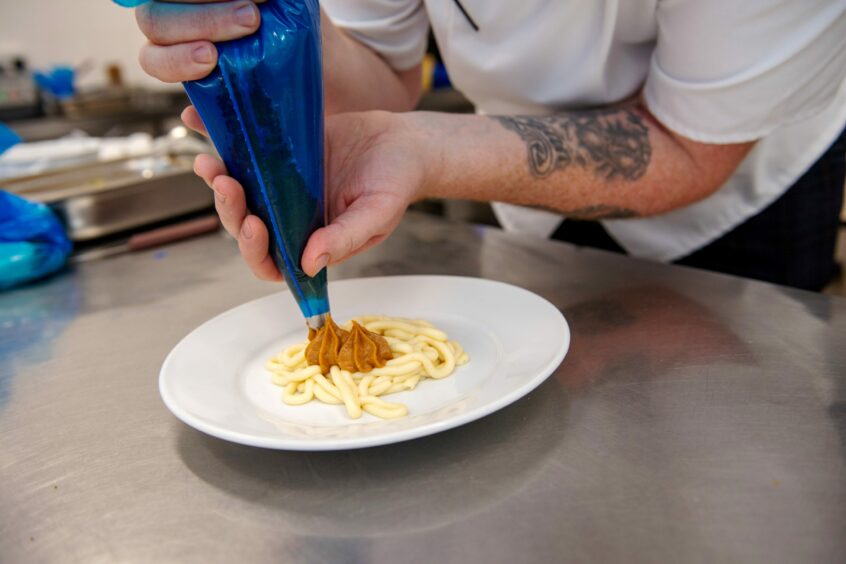
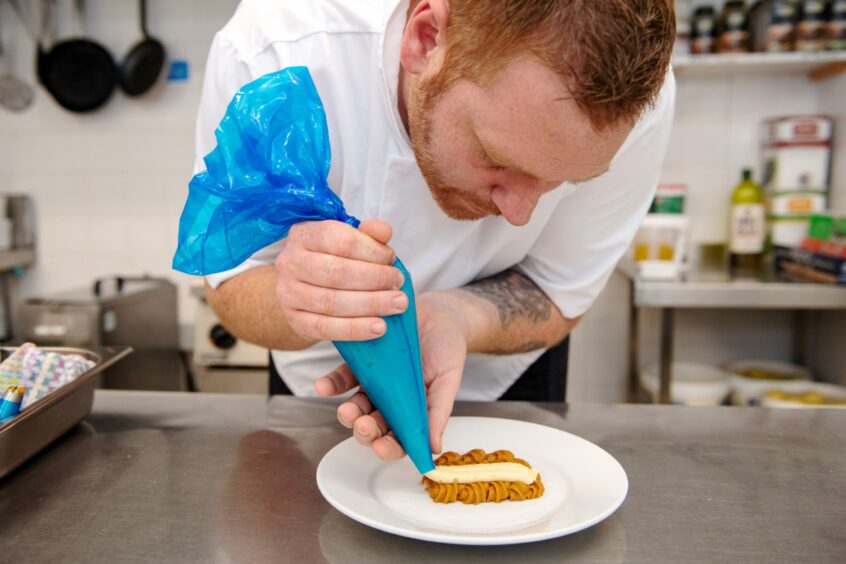

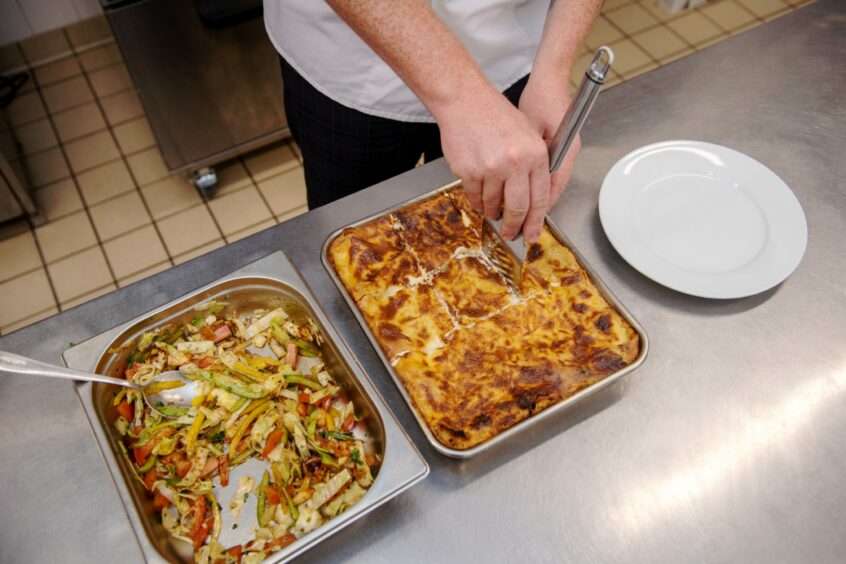











Conversation